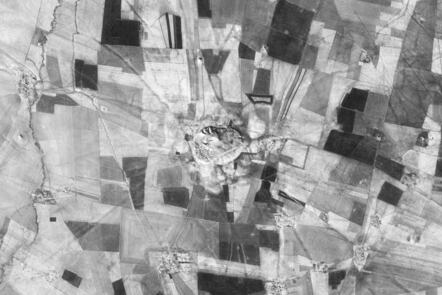Endangered Archaeology: Using Remote Sensing to Protect Cultural Heritage
Learn how to use satellite imagery to identify and assess archaeological sites in the Middle East and North Africa with this course from Durham University.

Duration
6 weeks
Weekly study
3 hours
100% online
How it works
Digital upgrade
Free
Learn about techniques to identify and monitor heritage sites
The Endangered Archaeology in the Middle East and North Africa (EAMENA) project has developed a methodology for documenting heritage sites and landscapes, using remote sensing as a key technique.
On this course, you’ll learn about the basics of satellite remote sensing and how to use it to identify and monitor threats to heritage sites and landscapes.
Discover how to assess the condition of archaeological sites and damage through Google Earth
You’ll start by learning to interpret satellite imagery before going through a step-by-step guide on how to use Google Earth Pro to find, record, and monitor archaeological sites.
Once you’ve developed your skills, you’ll look at identifying and assessing damage and threats to heritage sites, such as natural erosion or construction, and then recording your findings.
Explore basic mapmaking as a tool to communicate information
To round out your remote sensing toolkit, this course will take you through the archaeology of the landscapes of mud and stone. You’ll use examples to learn what information you can obtain when looking at these landscapes.
Finally, you’ll look at communicating information through a basic map, and techniques you can use when making maps.
Learn from experts in archaeology and remote sensing at the EAMENA Project
EAMENA Project team members have been at the forefront of remote sensing for archaeology since 2015, and Durham University archaeology has been doing this for over two decades. They use satellite imagery to find new sites, monitor site destruction, and organise heritage management across several countries.
Having trained local archaeologists and heritage professionals, the team is uniquely positioned to guide you through using satellite imagery in archaeology.
What topics will you cover?
- Using satellite imagery for archaeology
- Seeing archaeology
- Seeing damage
- Landscapes of mud
- Landscapes of stone
- Communicating information: making maps
More courses you might like
Learners who joined this course have also enjoyed these courses.


